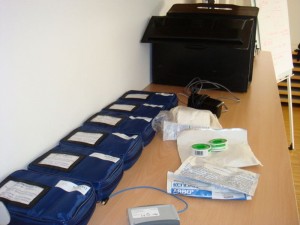Vierte Ausgabe von IJoDR erschienen!
Ich bin möchtig stolz mitzuteilen, dass heute die vierte Ausgabe unserer online-Zeitschrift International Journal of Dream Research erschienen. Das Ziel der Zeitschrift ist es begutachtete Beiträge aus dem Bereich der Traumforschung zu publizieren. Die Bereiche reichen dabei von Traumerinnerung, Trauminhalte, Albträume, luzide Träume, Träume bei Kindern bis zu psychologischen Aspekten des Schlafes im Allgemeinen. Zusätztlich zu den empirischen Arbeiten werden Überblicksartikel und Buch bzw. Mediabesprechung veröffentlicht. In der vierten Ausgabe der Zeitschrift gibt es einen “Invited Essay” von Allan Hobson und sieben Originalbeiträge:
- The Neurobiology of Consciousness: Lucid Dreaming Wakes Up (Allan Hobson)
- Dreams of Recovering Alcoholics: Mood, Dream Content, Discovery, and the Storytelling Method of Dream Interpretation (DeCicco, Higgins)
- Dreaming, Lucid Dreaming and Personality (Doll, Gittler, Holzinger)
- Home Dream Recall in Children and Young Adults (Schredl)
- A Re-Examination of the Interference Hypothesis on Dream Recall (Parke, Horton )
- Subjective Sleep Quality prior to Home and Away Games for Female Volleyball Players (Erlacher, Schredl, Lakus)
- A comparison of the dreams of male and Female Abstinent Alcoholics compared to Non Alcoholic Controls: Are the differences significant? (Parker, Alford)
- Nightmare frequency in patients with primary insomnia (Schredl)
Die Beiträge können kostenlos unter http://ijodr.org als pdf-Datei heruntergeladen werden. Das International Journal of Dream Research ist ein open access E-Journal und es werden keine Gebühren für den Autor erhoben. Interessierte Forscher/innen können ab sofort ihre Manuskripte an die Herausgeber senden:
* Michael Schredl (editor@ijodr.org)
* Daniel Erlacher (editor@ijodr.org)
Die nächste Ausgabe des International Journal of Dream Research soll im April 2010 erscheinen.







